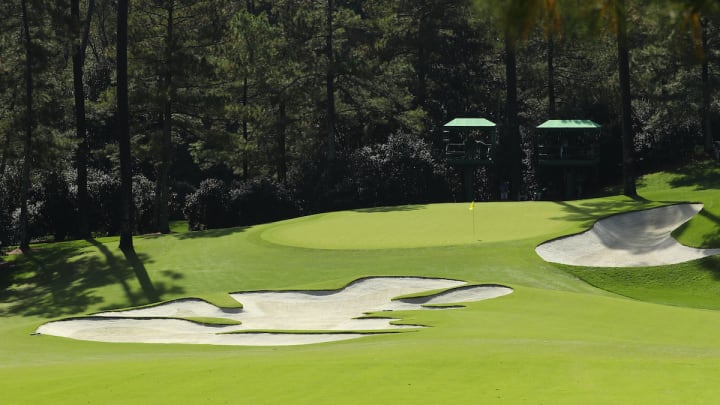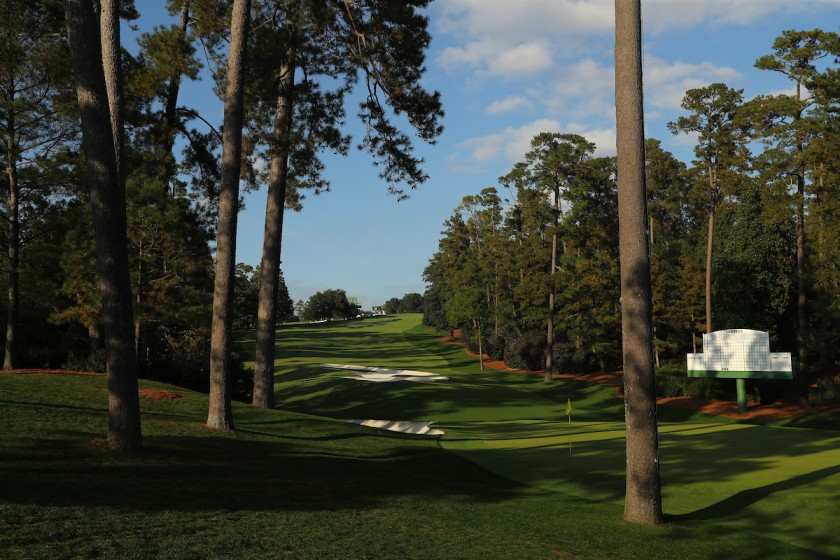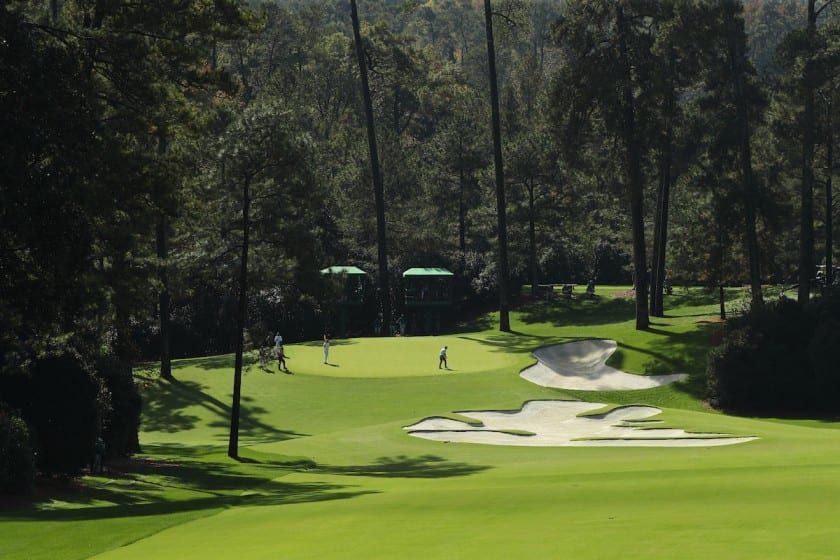Masters 10th Hole: Stats, History, Memorable Moments From Augusta National's Par-4 'Camellia'


From the 10th tee, the par-4 hole features nearly 100 feet in elevation drop that aids in the roll out of well-placed drives on the nearly 500-yard hole.

A view of the Augusta National Golf Club's 10th hole, looking from behind the green back toward the tee atop the hill.

A view of the green shows how it slopes from right to left. Any shot rolling off from the green's front could roll as much as 25 yards back down the fairway.
A closer look at Augusta National Golf Club's 10th hole for this year's Masters:
Name: Camellia
Par: 4
2022 yardage: 495
1934 yardage: 430
2021 scoring average: 4.22
All-time scoring average: 4.30
All-time difficulty rank: 1st
Lowest year: 4.08 (2018)
Highest year: 4.69 (1956)
THE LAYOUT
From the tee, which can be seen from the porch of Bobby Jones Cabin, the hole drops more than 100 feet in elevation, curving slightly left before rising to an expansive green that slopes from right to left. The bleach-white sand bunker that sits in the fairway's middle is mostly ornamental at this point as players will either work the ball along the hole's left side or to the center of the fairway.
SIGNIFICANT CHANGES
1937: Green relocated from fairway bottom to current location.
1968: Bunker to right of green enlarged. Pothole bunker right of green removed.
1972: Tees split and shifted left 10 yards.
2002: Masters tees moved back 5-10 yards and moved to the golfer’s left 5 yards.
Notes: The bunker that sits like a desolate island near the bottom and in the middle of the fairway is known as the Mackenzie bunker, named after Augusta National course architect Alister Mackenzie. Originally, its function was to protect the left side of the green, which originally sat in a hollow some 50 yards closer and to the right. In 1937, Perry Maxwell, who was a MacKenzie protégé, moved the green back to its current location on higher ground. The improvement immediately made the hole one of the course's most daunting.
ODDS AND ENDS
In his dominating 18-under-par win in 1997, Tiger Woods did not make his first birdie until the 10th hole of the first round. … In 1986, Jack Nicklaus started his historic final-round charge by sinking a 25-foot birdie putt on the 10th green. Later, Australian Greg Norman, who at the time was tied with Seve Ballesteros for the lead, would card a 6, creating a three-shot swing between him and Nicklaus, who won by a stroke over Norman. ... In 2013, 32-year-old Adam Scott became the "Wizard of Aus," as CBS analyst Nick Faldo called him, when Scott made a lengthy birdie putt on the 72nd hole to force a playoff with Angel Cabrera. Amid growing darkness on the second playoff hole at the 10th, Scott made birdie to become the first Australian to win the Masters. ... The Masters adopted the sudden-death playoff format in 1976 and, originally, was to start at the first hole. In 1979, the sequence was changed to make the 10th the opening playoff hole because that is where CBS' television coverage traditionally began. In 2004, the sequence was changed to its current rotation of 18th and 10th.
MEMORABLE MOMENTS
2012: Bubba Watson and South African Louis Oosthuizen finished regulation tied and then halved the first playoff hole with pars. On the 10th, both players hooked drives into the pines along the right. Watson's drive was thought to be the worst of the two, but he had an opening despite being so deep into the pines. Watson had 135 yards to the front of the green, 162 to the pin. Off the pine straw, Watson rope-hooked a 52-degree gap wedge, making the shot curve some 40 yards before landing the ball on the green with so much spin that it rolled to within 12 feet of the hole. Watson made par to win his first Masters.
SEE MORE OF AUGUSTA NATIONAL'S BACK NINE
10 | 11 | 12 | 13 | 14 | 15 | 16 | 17 | 18
